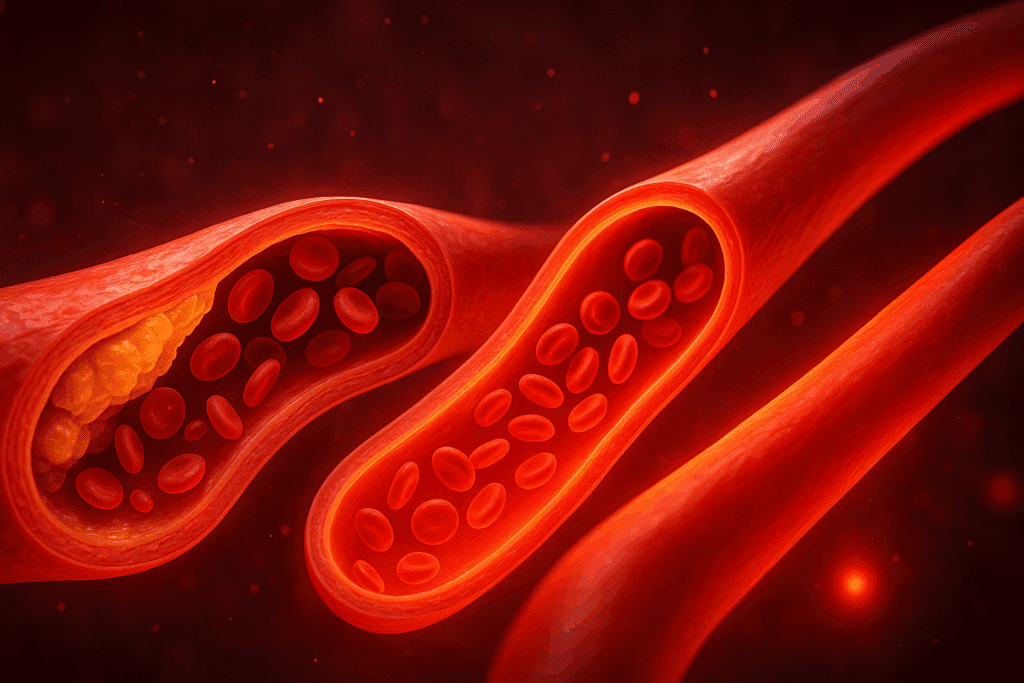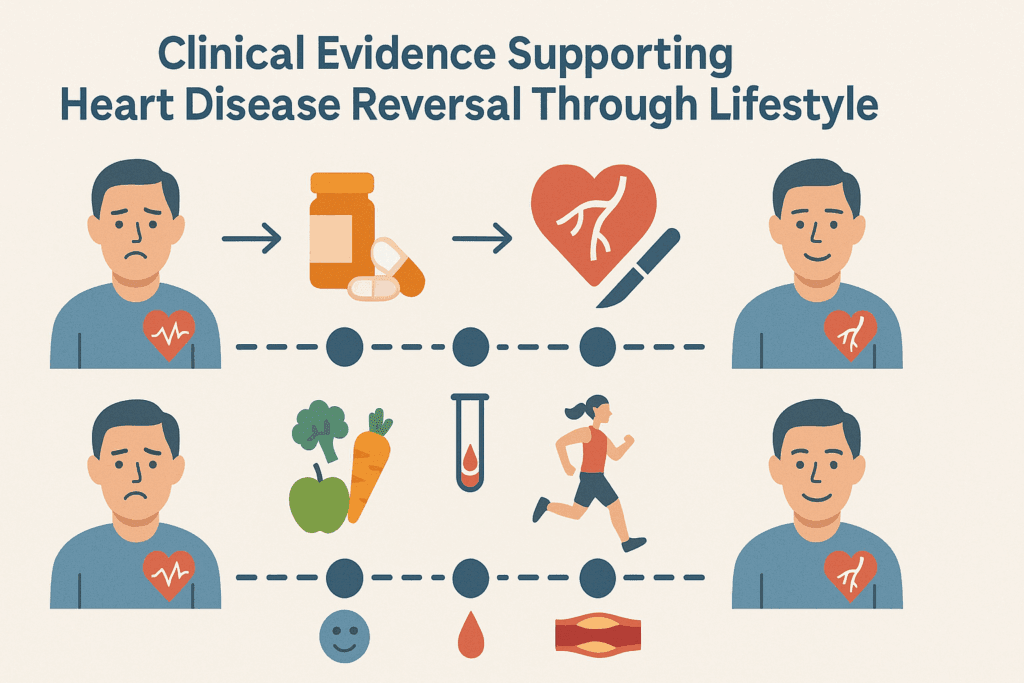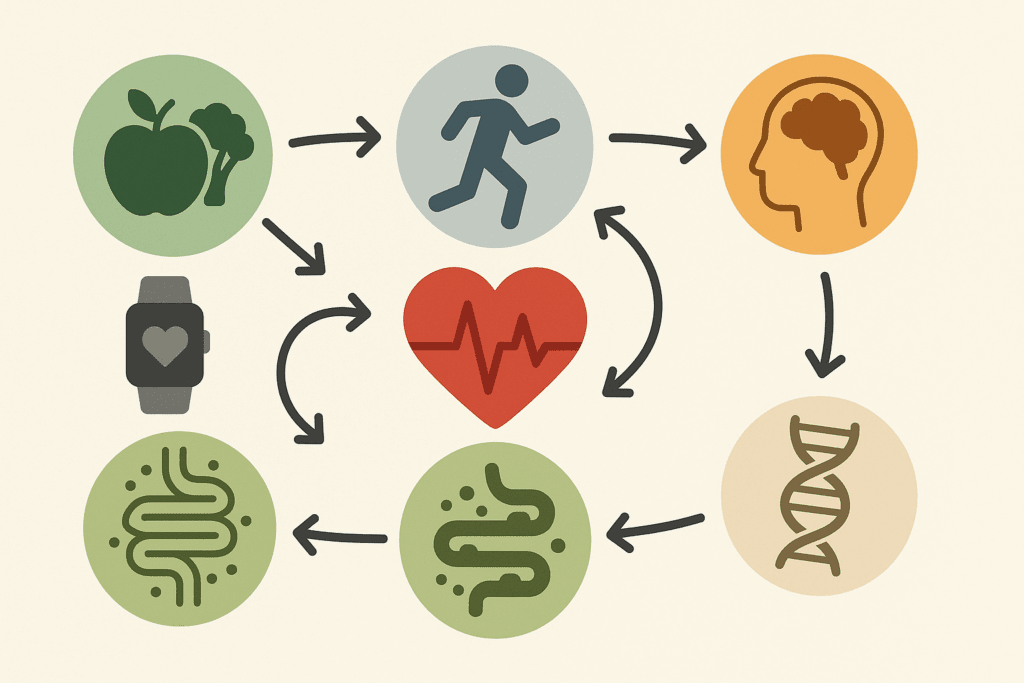Heart disease remains one of the leading causes of death worldwide, but the conversation around cardiovascular health has shifted dramatically in recent years. Instead of relying solely on medications or surgical interventions, experts are increasingly recognizing the powerful role of lifestyle in both preventing and reversing heart disease. In particular, the integration of a heart reversal diet with endurance training offers a dynamic and effective strategy for those looking to protect and improve their cardiovascular health. This synergy between diet and physical activity does not just mitigate risk; it can, in many cases, reverse existing heart disease, improve quality of life, and extend longevity.
You may also like: Smart Nutrition Choices for a Healthier Lifestyle: What to Know About Whole Grain Rice and Whole Wheat Rice

The Science Behind Reversing Heart Disease Through Diet
The idea that diet alone can reverse heart disease might seem radical to some, but there is a growing body of evidence suggesting it is entirely possible. Studies conducted over the past several decades, including those led by Dr. Dean Ornish and Dr. Caldwell Esselstyn, have demonstrated that a plant-based, low-fat, whole-food diet can reduce arterial plaque, lower LDL cholesterol, and improve endothelial function. The concept of reversing heart disease through diet is not just theoretical—it is supported by clinical outcomes and imaging data showing regression of atherosclerosis in compliant patients.
One of the core mechanisms behind this effect is inflammation reduction. Diets high in saturated fats, refined carbohydrates, and processed foods contribute to chronic inflammation, a key driver of plaque formation and vascular dysfunction. Conversely, diets rich in fiber, antioxidants, and unsaturated fats help reduce systemic inflammation, lower blood pressure, and improve insulin sensitivity—all factors that contribute to cardiovascular repair.
Additionally, the heart reversal diet focuses on nutrient density over calorie content. Whole plant foods are packed with vitamins, minerals, and phytochemicals that nourish the cardiovascular system. This dietary approach not only halts the progression of disease but helps the body naturally engage its own healing mechanisms.

Understanding the Components of a Heart Reversal Diet
At its core, a heart reversal diet emphasizes unprocessed, plant-based foods. This includes a wide range of vegetables, legumes, fruits, whole grains, seeds, and nuts. The exclusion of animal products, added sugars, and processed oils is central to this approach, as these components are linked to arterial damage and metabolic disruption.
Leafy greens, for instance, are rich in nitrates that convert to nitric oxide in the body—a molecule critical for vasodilation and blood flow. Berries, with their high anthocyanin content, provide antioxidant protection and reduce oxidative stress on arterial walls. Legumes such as lentils and beans offer both soluble fiber and plant-based protein, helping to regulate cholesterol and support metabolic health.
By centering meals around these high-nutrient foods, individuals can reduce the strain on their cardiovascular system. The heart reversal diet also tends to be naturally lower in sodium and higher in potassium, an ideal balance for controlling blood pressure. These dietary changes don’t merely improve risk factors; they create an environment in the body conducive to actual reversal of disease.
How to Reverse Heart Failure with Diet: The Role of Consistency and Personalization
The question of how to reverse heart failure with diet underscores the importance of more than just food choices. Consistency, timing, and personalization are also key factors in achieving lasting results. While adopting a heart reversal diet is a critical first step, success depends on sustained adherence and the integration of dietary changes into daily life.
Reversing heart failure through diet is not an overnight process. It requires commitment and often support from healthcare professionals, especially in more advanced stages. Nutritional strategies should be tailored to the individual’s health status, medication regimen, and lifestyle. For instance, those with fluid retention may need to monitor their sodium intake more carefully, while those on blood thinners might require adjusted vitamin K intake.
Meal planning and preparation become vital tools in this journey. Preparing meals at home using whole ingredients ensures control over portion sizes and nutrient content. It also fosters a deeper connection with the food we consume, which can enhance mindfulness and long-term dietary compliance. Meal tracking apps and support groups can provide additional accountability and motivation, especially during the early stages of transition.

The Power of Endurance Training in Cardiovascular Recovery
Endurance training, whether in the form of walking, cycling, swimming, or running, exerts profound benefits on the heart and vascular system. When combined with a heart reversal diet, its effects can be transformative. Regular aerobic activity strengthens the heart muscle, improves circulation, reduces resting heart rate, and enhances the body’s ability to utilize oxygen efficiently.
Exercise also stimulates the production of endothelial nitric oxide, which plays a key role in maintaining flexible, responsive blood vessels. Over time, this leads to improved vascular function and reduced blood pressure. Endurance training further supports metabolic health by enhancing insulin sensitivity and aiding in weight regulation—two crucial factors in managing and reversing heart disease.
Importantly, endurance exercise promotes the formation of collateral blood vessels around blocked arteries, improving perfusion even in areas with reduced flow. This adaptive response, combined with the anti-inflammatory and lipid-lowering effects of a plant-based diet, forms a powerful strategy for cardiac rehabilitation and disease reversal.

Synergizing Nutrition and Exercise for Optimal Heart Health
While diet and exercise independently support heart health, their combination offers synergistic benefits that go beyond the sum of their parts. Reversing heart disease through diet becomes even more effective when paired with structured physical activity, especially endurance-based modalities. Together, they create a feedback loop of physiological improvements: enhanced energy, reduced inflammation, better blood lipid profiles, and stronger cardiac function.
One of the key advantages of this combined approach is its effect on endothelial function. As diet reduces oxidative damage and restores nitric oxide production, exercise amplifies this effect through increased vascular shear stress, prompting further adaptations in arterial flexibility and responsiveness. These changes are measurable, with studies showing improved flow-mediated dilation and reduced arterial stiffness in individuals who adopt both interventions.
Moreover, the dual approach of diet and endurance training enhances psychological well-being, which is often compromised in those with chronic cardiovascular conditions. Regular movement releases endorphins and improves sleep quality, while nutrient-rich foods stabilize blood sugar and mood. Together, they support not just physical recovery, but emotional resilience and mental clarity as well.

Practical Strategies for Implementing a Heart Reversal Lifestyle
Making lifestyle changes can be daunting, but the path to reversing heart disease through diet and exercise is grounded in practical, actionable steps. Begin with small, manageable changes rather than attempting a complete overhaul overnight. Swapping processed snacks for fresh fruit, replacing red meat with lentils or beans, and choosing brown rice over white are simple yet impactful modifications.
Gradual implementation of endurance training is equally important. Start with daily walks, then build toward more structured cardiovascular workouts as endurance and confidence grow. Setting specific, achievable goals—such as walking 30 minutes a day for five days a week—provides momentum and a sense of accomplishment. For those with existing heart conditions, it is crucial to consult with a cardiologist or cardiac rehab specialist before initiating a new exercise regimen.
Social support plays a vital role in sustaining these changes. Whether it’s a cooking partner, walking buddy, or online community, connection helps reinforce positive habits. Journaling food intake and exercise can provide insight into patterns and highlight areas for improvement. The integration of mindfulness practices, such as meditation or yoga, can further support stress reduction and cardiovascular health.

Clinical Evidence Supporting Heart Disease Reversal Through Lifestyle
One of the most compelling aspects of this approach is the clinical evidence that supports it. Research has consistently shown that patients who adopt a whole-food, plant-based diet alongside regular aerobic exercise experience significant improvements in key markers of heart health. In some cases, angiographic imaging has revealed regression of arterial blockages, while blood tests show dramatic reductions in LDL cholesterol and inflammation markers such as C-reactive protein.
For example, Dr. Ornish’s Lifestyle Heart Trial demonstrated that intensive lifestyle changes could reverse coronary artery disease in as little as one year. Participants not only saw improvements in angina frequency and exercise tolerance but also experienced measurable regression of atherosclerotic plaque. These changes were not achieved through medication alone, but through a comprehensive program that included a heart reversal diet, stress management, and endurance training.
The impact of diet on endothelial function is particularly notable. In just a few weeks, adopting a plant-based diet has been shown to improve flow-mediated dilation, a marker of vascular health. This underscores how rapidly the body can begin healing once harmful dietary components are removed and replaced with nutrient-dense, anti-inflammatory foods.

Overcoming Barriers to Heart Health Transformation
Despite the clear benefits, many individuals face challenges when attempting to adopt these lifestyle changes. Common barriers include time constraints, lack of access to healthy foods, limited cooking skills, and social pressures. Addressing these obstacles requires a proactive and supportive approach.
Meal prepping on weekends can alleviate time pressures during the week, while local food co-ops and community-supported agriculture (CSA) programs can improve access to fresh produce. Online resources and cooking classes can help build culinary confidence, making it easier to prepare meals that align with a heart reversal diet. Surrounding oneself with a supportive network—whether friends, family, or healthcare providers—can also buffer against social challenges and foster accountability.
It’s essential to reframe the perception of diet and exercise as restrictive or burdensome. Instead, view them as tools of empowerment and self-care. The long-term rewards—increased vitality, reduced medication dependence, and enhanced longevity—far outweigh the initial effort required to shift habits. Celebrating small victories along the way helps reinforce progress and builds intrinsic motivation.
A Sustainable Path Toward Reversing Heart Disease
The journey to heart health is not about short-term fixes but about building sustainable habits that support lifelong vitality. Reversing heart disease through diet and endurance training is not only achievable but sustainable when approached with intention, education, and self-compassion. A heart reversal diet is not a fad but a science-backed nutritional strategy that supports cardiovascular repair and overall wellness. Combined with consistent physical activity, it becomes a cornerstone of long-term heart health.
The key lies in making lifestyle changes that are not only effective but enjoyable and sustainable. Experiment with new plant-based recipes, find physical activities that bring joy, and remember that each choice is a step toward healing. With the right tools and mindset, the path to reversing heart disease becomes a journey of renewal, empowerment, and profound transformation.

Frequently Asked Questions: Reversing Heart Disease Through Diet and Endurance Training
1. Can emotional health impact the effectiveness of a heart reversal diet? Yes, emotional well-being plays a critical yet often overlooked role in the success of a heart reversal diet. Chronic stress, anxiety, and depression can elevate cortisol levels, increase inflammation, and impair dietary adherence, all of which can counteract the benefits of nutritional and physical interventions. Incorporating stress-reducing practices such as mindfulness, therapy, or even social connection can amplify the physiological benefits of a plant-based lifestyle. When aiming for long-term success in reversing heart disease through diet, it’s essential to address mental and emotional resilience alongside nutrition. A comprehensive approach that includes psychological well-being helps reinforce consistent behaviors necessary to sustain heart health improvements.
2. Are there specific micronutrients that enhance the results of a heart reversal diet? Absolutely. While macronutrients often get the spotlight, certain micronutrients are pivotal for vascular repair and cardiovascular resilience. Magnesium, found in leafy greens and legumes, supports heart rhythm and blood vessel dilation. Vitamin K2, although less common in plant foods, plays a role in arterial flexibility by regulating calcium deposition—its presence in fermented plant-based foods like natto may enhance the effectiveness of reversing heart disease through diet. Similarly, selenium and zinc, available in seeds and whole grains, are essential for antioxidant enzyme function. Including a wide variety of whole foods ensures these micronutrients support the diet’s heart-healing potential.
3. How can someone with limited mobility engage in endurance training for heart disease reversal? Limited mobility doesn’t exclude individuals from benefiting from endurance-style exercise. Low-impact activities like water aerobics, seated recumbent cycling, or chair yoga can provide cardiovascular benefits without overstraining joints or muscles. What matters is consistency and elevating the heart rate within safe limits, which still stimulates nitric oxide production and vascular elasticity. Pairing these adapted exercises with a heart reversal diet can still provide meaningful progress in reversing heart disease through diet and movement. Working with a physical therapist or cardiac rehab specialist can help design a plan suited to personal physical limitations.
4. Does reversing heart disease through diet require strict veganism? While many successful protocols emphasize whole-food plant-based eating, strict veganism is not the only path to cardiovascular improvement. Some individuals adopt a predominantly plant-based diet while incorporating minimal, heart-healthy animal products like wild-caught fish or fermented dairy, depending on cultural preferences or nutritional needs. What remains non-negotiable in a heart reversal diet is the elimination of processed meats, trans fats, and refined sugars. Flexibility can support long-term compliance, especially when paired with endurance activity and other heart-supportive habits. However, those seeking the most dramatic reversal effects often find that strict adherence to plant-based foods accelerates measurable improvements.
5. How does gut health intersect with cardiovascular reversal efforts? Emerging research has illuminated the gut-heart axis, showing that gut microbiota significantly influence systemic inflammation and arterial health. Diets high in fiber and polyphenols support a diverse microbiome, which in turn produces short-chain fatty acids that regulate blood pressure and lipid metabolism. A heart reversal diet rich in prebiotic fibers can reduce TMAO, a gut-derived compound linked to atherosclerosis. Moreover, fermented foods like kimchi or sauerkraut enhance gut health and may contribute to reversing heart disease through diet by reducing endotoxemia. This gut-focused approach adds another dimension to cardiovascular recovery that is both evidence-based and increasingly supported by functional medicine.
6. What role do genetics play in determining the success of reversing heart disease through diet? Genetics certainly influence baseline cardiovascular risk, but they do not preclude the ability to reverse damage through lifestyle. Epigenetic research has shown that gene expression can be modulated by environmental and dietary inputs. This means that even those with a family history of heart failure can benefit substantially from adopting a heart reversal diet and engaging in endurance training. For individuals carrying genetic variants related to lipid metabolism or clotting disorders, tailored interventions—like increasing omega-3 intake or monitoring inflammatory markers—can further enhance success. Understanding one’s genetic predispositions helps personalize the approach, making the path toward reversal even more effective.
7. Are there emerging technologies that support dietary adherence in heart disease reversal? Yes, the digital health landscape has evolved dramatically, offering tools to improve dietary tracking, education, and behavior change. Mobile apps now use AI to provide real-time feedback on meal choices aligned with a heart reversal diet. Wearable fitness devices also integrate heart rate and dietary data to give a fuller picture of one’s cardiovascular profile. Some platforms include gamification and social accountability features that help sustain momentum over the long term. These tools, when used strategically, can make reversing heart disease through diet more engaging and personalized. They also allow for better communication between patients and healthcare teams, enabling data-driven support.
8. Can older adults benefit from learning how to reverse heart failure with diet? Absolutely. Age does not limit the body’s ability to heal, especially when inflammation is reduced and nutrient density is increased. Older adults often experience significant gains in energy, mobility, and mental clarity when adopting a heart reversal diet. Endurance activities suited to their capabilities, such as walking or swimming, can further enhance cardiovascular efficiency without undue strain. Moreover, dietary interventions help reduce polypharmacy by lowering blood pressure and cholesterol naturally. Teaching older adults how to reverse heart failure with diet empowers them to reclaim independence and quality of life, often beyond what medications alone can offer.
9. How can families support a member who is trying to follow a heart reversal diet? Support from family members can make a profound difference in adherence and emotional resilience. Preparing meals together, learning new recipes, and sharing in physical activity create a sense of shared purpose and encouragement. When families adopt elements of the heart reversal diet themselves, it minimizes feelings of isolation for the person making the change. Open dialogue about challenges and victories fosters understanding and keeps motivation high. Additionally, involving the entire household in reversing heart disease through diet can ripple out into broader health improvements for everyone involved.
10. What are realistic expectations for reversing heart failure with diet and endurance training? Setting realistic expectations is key to maintaining motivation and persistence. While some individuals may notice improvements in blood pressure or cholesterol within weeks, more significant changes such as regression of arterial plaque or increased ejection fraction may take several months or longer. Reversing heart failure with diet requires consistency and a willingness to adapt to evolving nutritional and physical needs. Celebrating incremental milestones, such as walking further or reducing medication, helps sustain progress. Long-term reversal is achievable, especially when both dietary and exercise components are addressed holistically, but it requires patience, professional guidance, and a deep commitment to lifestyle transformation.
Conclusion: The Synergy of Diet and Endurance Training for Lasting Cardiovascular Wellness
In a world where heart disease remains a persistent threat, the convergence of nutrition and movement offers a beacon of hope. Reversing heart disease through diet is no longer a fringe concept but a reality grounded in science and reinforced by real-life success stories. When combined with endurance training, this approach offers a holistic and sustainable way to reclaim cardiovascular health.
Understanding how to reverse heart failure with diet opens new possibilities for those facing a diagnosis once deemed irreversible. With the adoption of a heart reversal diet, grounded in whole, plant-based foods, and supported by regular aerobic activity, individuals can not only halt the progression of disease but foster true recovery. This integrative path is not simply about managing symptoms—it’s about unlocking the body’s natural capacity for healing.
As research continues to validate these approaches, it becomes increasingly clear that we are not powerless in the face of heart disease. The choices we make daily—what we eat, how we move, and how we care for ourselves—hold the potential to change our health trajectory. With knowledge, support, and determination, reversing heart disease through diet and endurance training becomes not just a goal, but a reality within reach for those ready to take that first step toward lasting cardiovascular wellness.
Was this article helpful? Don’t let it stop with you. Share it right now with someone who needs to see it—whether it’s a friend, a colleague, or your whole network. And if staying ahead on this topic matters to you, subscribe to this publication for the most up-to-date information. You’ll get the latest insights delivered straight to you—no searching, no missing out.
Further Reading:
Intensive Lifestyle Changes for Reversal of Coronary Heart Disease

